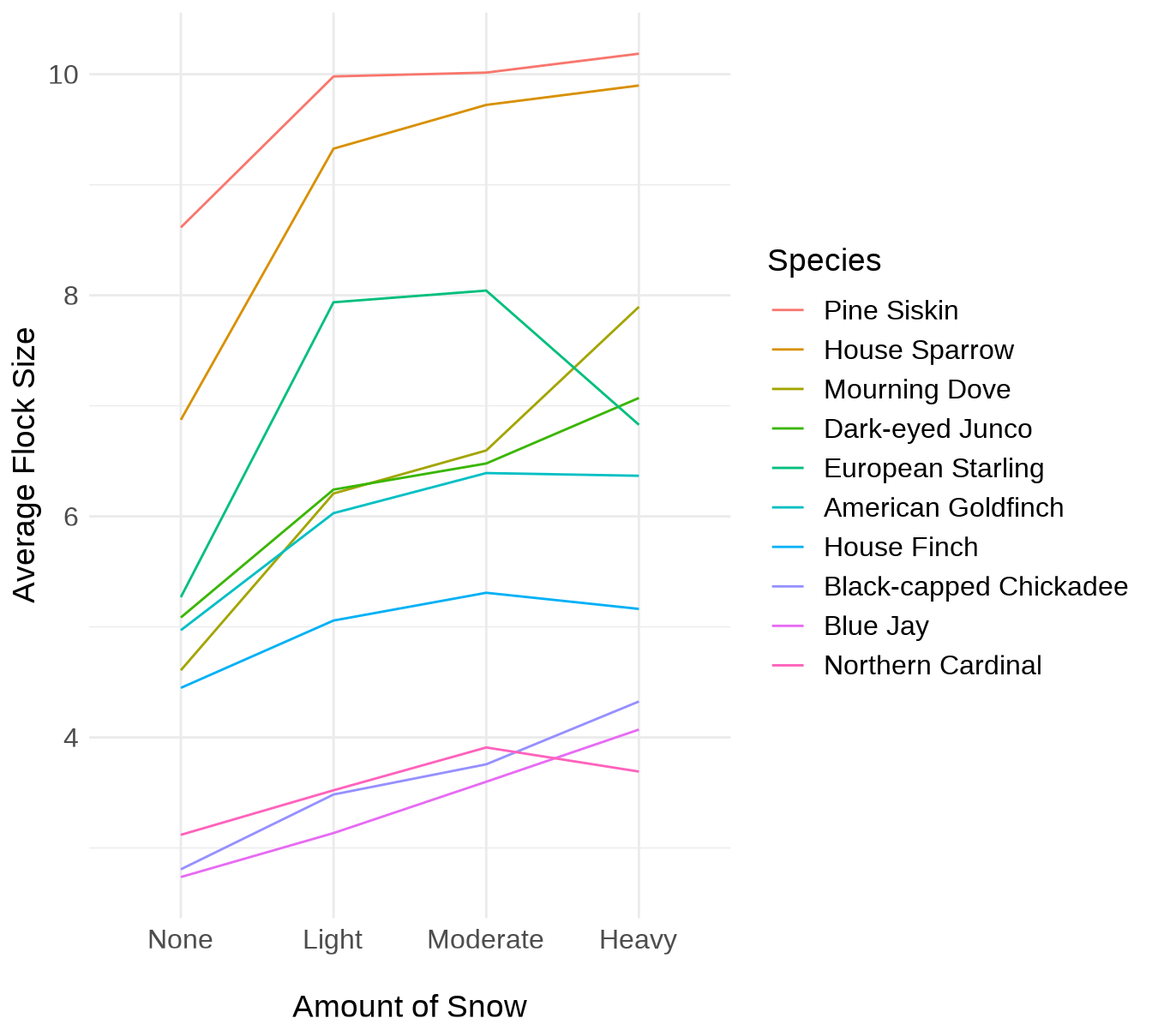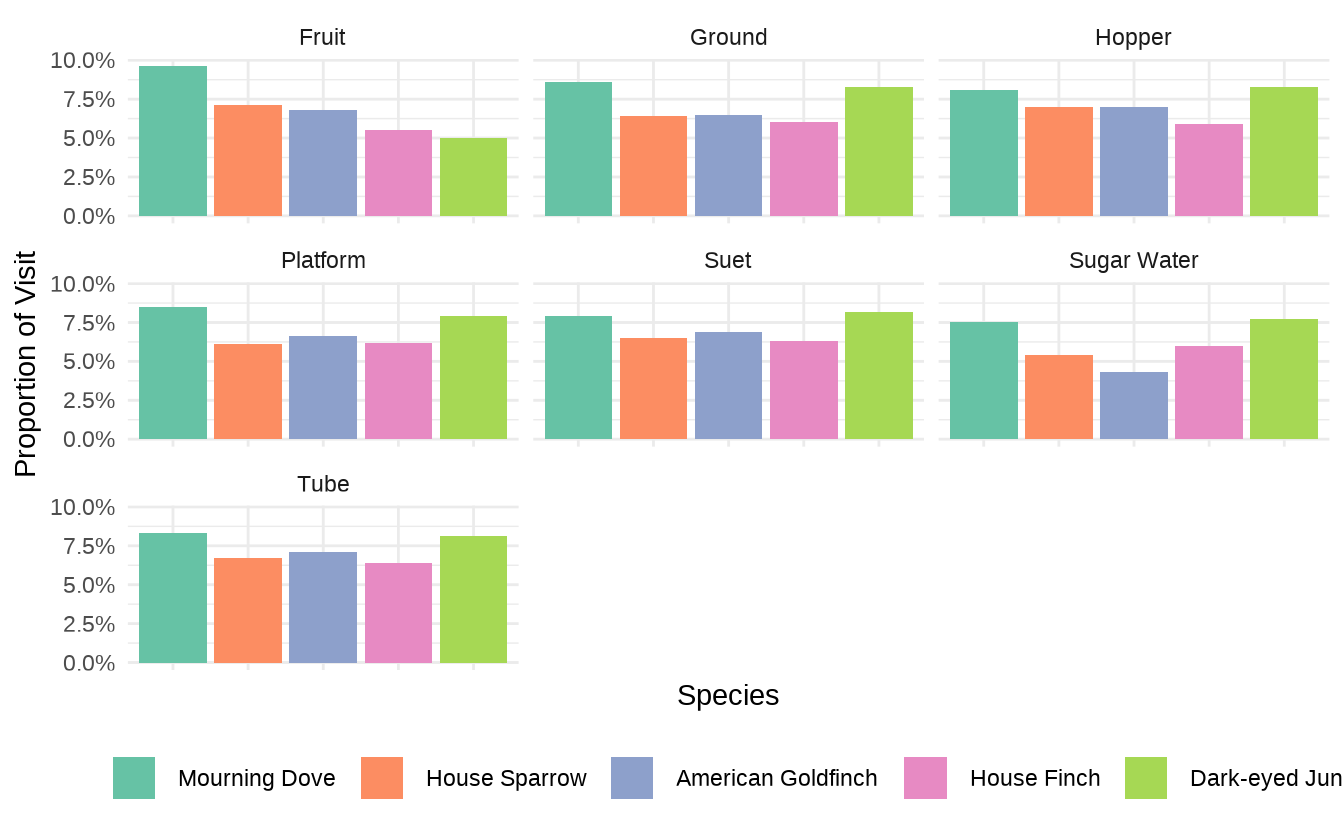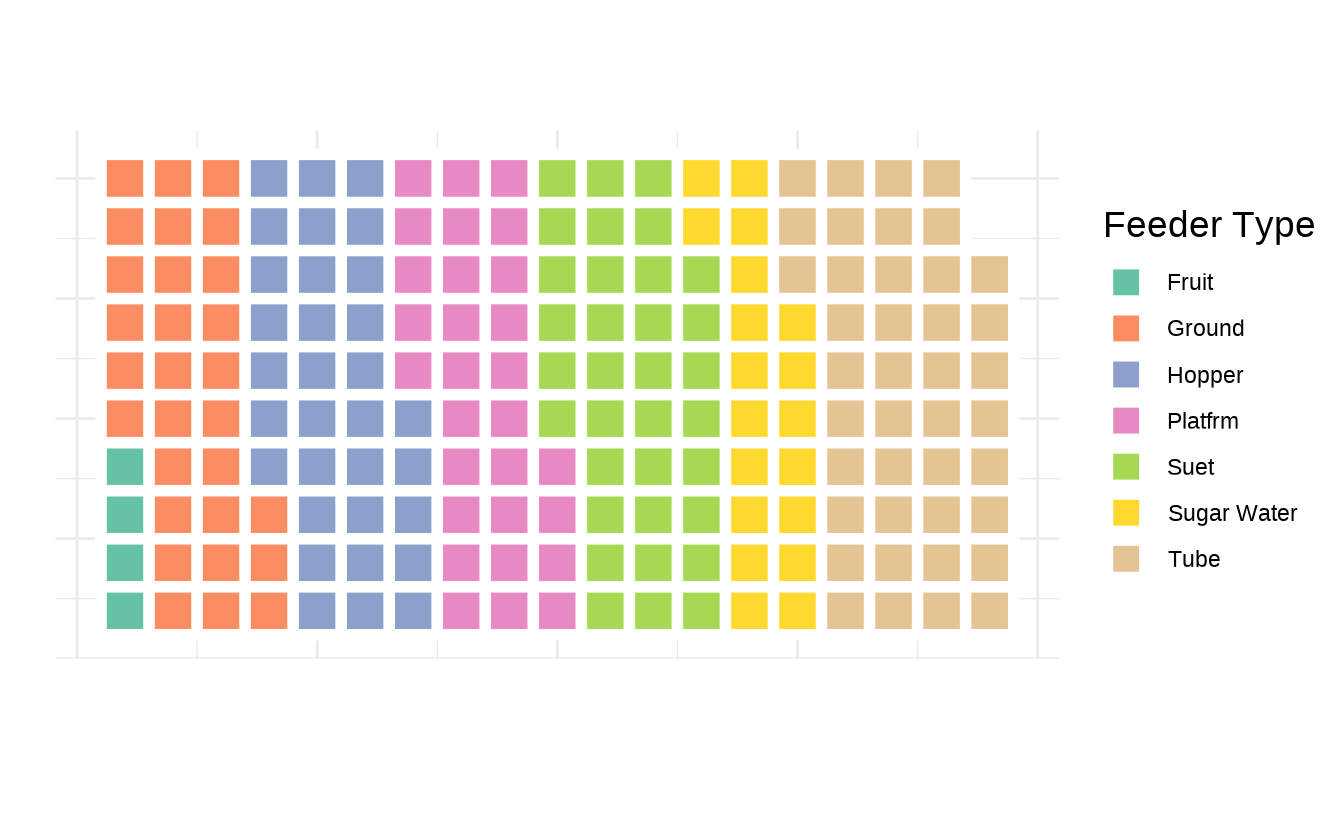Rows: 49,999
Columns: 62
$ loc_id <chr> "L32349", "L72034", "L33529", "L37441", "…
$ proj_period_id <chr> "PFW_1998", "PFW_2009", "PFW_1999", "PFW_…
$ yard_type_pavement <dbl> NA, 0, NA, NA, 0, 0, 0, NA, 0, 0, 0, 0, 0…
$ yard_type_garden <dbl> NA, 0, NA, NA, 0, 0, 0, NA, 0, 0, 0, 0, 1…
$ yard_type_landsca <dbl> NA, 1, NA, NA, 1, 1, 1, NA, 1, 1, 1, 1, 0…
$ yard_type_woods <dbl> NA, 1, NA, NA, 1, 0, 1, NA, 1, 0, 0, 1, 0…
$ yard_type_desert <dbl> NA, 0, NA, NA, 0, 0, 0, NA, 0, 0, 0, 0, 0…
$ hab_dcid_woods <dbl> NA, 0, NA, 0, 1, 0, 1, 1, 0, NA, 0, 1, 0,…
$ hab_evgr_woods <dbl> NA, 0, NA, 0, 0, 0, 0, 1, 0, NA, 0, NA, 0…
$ hab_mixed_woods <dbl> NA, 1, NA, 1, 1, 0, 0, 1, 0, NA, 0, 1, 0,…
$ hab_orchard <dbl> NA, 0, NA, NA, 0, 0, 0, 0, 0, NA, 0, 1, 0…
$ hab_park <dbl> NA, 0, NA, NA, 0, 0, 1, NA, NA, 1, NA, 1,…
$ hab_water_fresh <dbl> NA, 0, NA, 1, 1, 1, 1, 0, 0, NA, 0, 1, 0,…
$ hab_water_salt <dbl> NA, 0, NA, NA, 0, 0, 0, 0, 0, NA, 0, NA, …
$ hab_residential <dbl> NA, 0, NA, 1, 0, 1, 1, 0, 1, 1, 1, 1, 1, …
$ hab_industrial <dbl> NA, 0, NA, 0, 0, 0, 0, 0, 1, NA, 0, NA, 0…
$ hab_agricultural <dbl> NA, 0, NA, NA, 1, 0, 0, NA, 0, NA, 1, 1, …
$ hab_desert_scrub <dbl> NA, 0, NA, NA, 0, 1, 0, 1, 0, NA, 0, NA, …
$ hab_young_woods <dbl> NA, 0, NA, NA, 1, 0, 1, NA, 0, NA, 1, 1, …
$ hab_swamp <dbl> NA, 0, NA, NA, 1, 0, 1, NA, NA, NA, NA, 1…
$ hab_marsh <dbl> NA, 0, NA, NA, 0, 0, 0, NA, 0, NA, 0, 1, …
$ evgr_trees_atleast <dbl> NA, 4, NA, 3, 11, 4, 0, 3, 11, 11, 1, 4, …
$ evgr_shrbs_atleast <dbl> NA, 1, NA, 3, 4, 0, 1, NA, 1, 11, 4, 1, 4…
$ dcid_trees_atleast <dbl> NA, 4, NA, 3, 4, 4, 11, 3, 11, 4, 4, 4, 4…
$ dcid_shrbs_atleast <dbl> NA, 0, NA, 3, 11, 11, 11, 3, 4, 4, 4, 1, …
$ fru_trees_atleast <dbl> NA, 0, NA, NA, 1, 4, 1, NA, 1, 4, 0, 1, 4…
$ cacti_atleast <dbl> NA, 0, NA, 0, 0, 0, 0, NA, 0, NA, 0, 0, 1…
$ brsh_piles_atleast <dbl> NA, 1, NA, NA, 1, 0, 1, NA, 1, 1, 0, 0, 1…
$ water_srcs_atleast <dbl> NA, 1, NA, NA, 1, 0, 1, NA, 0, 1, 0, 1, 0…
$ bird_baths_atleast <dbl> NA, 0, NA, NA, 1, 0, 0, NA, 1, 1, 1, 1, 1…
$ nearby_feeders <dbl> 1, 0, 1, 0, 1, 1, 0, 0, 1, 1, 1, 1, 1, NA…
$ squirrels <dbl> 1, 1, 1, 1, 0, NA, 0, 1, 1, 1, 0, NA, 0, …
$ cats <dbl> 1, 0, NA, 0, 1, 1, 1, 1, 1, 1, 0, 1, 1, N…
$ dogs <dbl> NA, 0, NA, 0, 1, NA, 1, 1, 0, NA, 1, NA, …
$ humans <dbl> NA, 0, 1, 1, 1, NA, 1, 1, 1, 1, 1, NA, 1,…
$ housing_density <dbl> NA, 1, NA, 3, 1, 2, 3, 1, 3, 3, 2, 3, 3, …
$ fed_yr_round <dbl> NA, NA, NA, NA, NA, NA, 0, 1, NA, 1, NA, …
$ fed_in_jan <dbl> NA, 1, 1, NA, 1, 1, 1, 0, 1, 1, 1, 1, 1, …
$ fed_in_feb <dbl> NA, 1, 1, NA, 1, 1, 1, 0, 1, 1, 1, 1, 1, …
$ fed_in_mar <dbl> NA, 1, 1, NA, 1, 1, 1, 0, 1, 1, 1, 1, 1, …
$ fed_in_apr <dbl> NA, 1, 1, NA, 1, 1, 1, 0, 1, 1, 1, 1, 1, …
$ fed_in_may <dbl> NA, 1, 1, NA, NA, 0, 1, 0, 1, 1, 1, 1, 1,…
$ fed_in_jun <dbl> NA, 1, 0, NA, NA, 0, 0, 0, 1, 1, 1, 1, 1,…
$ fed_in_jul <dbl> NA, 1, 0, NA, NA, 0, 0, 0, 1, 1, 1, 1, 1,…
$ fed_in_aug <dbl> NA, 1, 0, NA, NA, 0, 0, 0, 1, 1, 1, 1, 1,…
$ fed_in_sep <dbl> NA, 1, 0, NA, NA, 0, 0, 0, 1, 1, 1, 1, 1,…
$ fed_in_oct <dbl> NA, 1, 1, NA, NA, 1, 0, 0, 1, 1, 1, 1, 1,…
$ fed_in_nov <dbl> NA, 1, 1, NA, 1, 1, 1, 0, 1, 1, 1, 1, 1, …
$ fed_in_dec <dbl> NA, 1, 1, NA, 1, 1, 1, 0, 1, 1, 0, 1, 1, …
$ numfeeders_suet <dbl> 1, 1, 3, 1, 2, 1, 0, 1, 2, 1, 0, 3, 1, 2,…
$ numfeeders_ground <dbl> 0, 1, 3, 1, 1, 0, 0, 1, 2, NA, 0, 2, 1, 2…
$ numfeeders_hanging <dbl> 1, NA, 2, 1, NA, 1, NA, 1, NA, 1, NA, 8, …
$ numfeeders_platfrm <dbl> 1, 1, 3, 1, 0, 1, 1, 0, 0, NA, 1, 1, 0, 0…
$ numfeeders_humming <dbl> 0, NA, 0, 0, 0, 0, 0, 0, 0, NA, 0, 2, 0, …
$ numfeeders_water <dbl> 0, NA, 1, 0, NA, 0, NA, 1, NA, 1, NA, 3, …
$ numfeeders_thistle <dbl> 2, NA, 1, NA, NA, 0, NA, NA, NA, 1, NA, 2…
$ numfeeders_fruit <dbl> 0, NA, 0, NA, 0, 0, 0, NA, 0, NA, 0, 1, 1…
$ numfeeders_hopper <dbl> NA, NA, NA, NA, 1, NA, 0, NA, 2, NA, 0, N…
$ numfeeders_tube <dbl> NA, 3, NA, NA, 5, NA, 0, NA, 2, NA, 3, NA…
$ numfeeders_other <dbl> NA, NA, NA, NA, 0, NA, 0, NA, 0, NA, 0, N…
$ population_atleast <dbl> NA, 1, NA, 100001, 1, 5001, 100001, 1, 25…
$ count_area_size_sq_m_atleast <dbl> NA, 100.01, NA, 100.01, 375.01, 1.01, 100…



